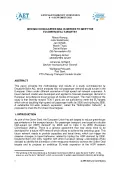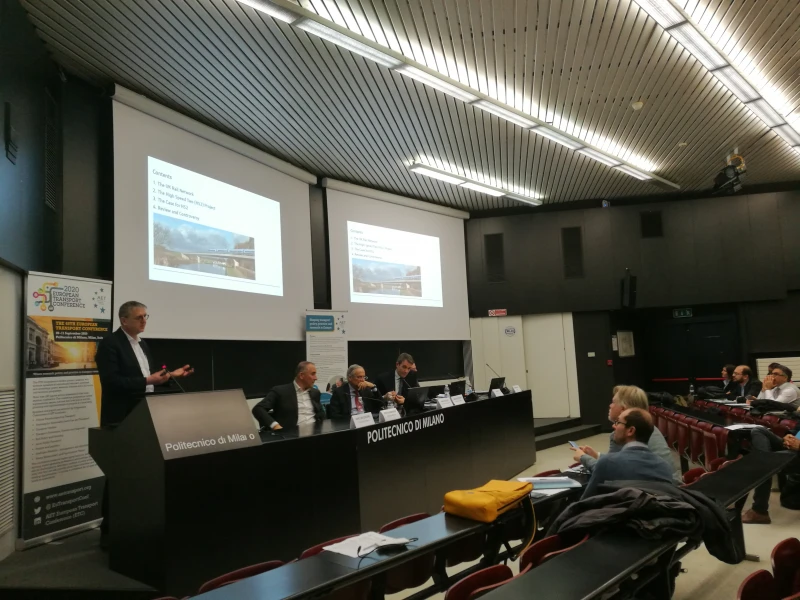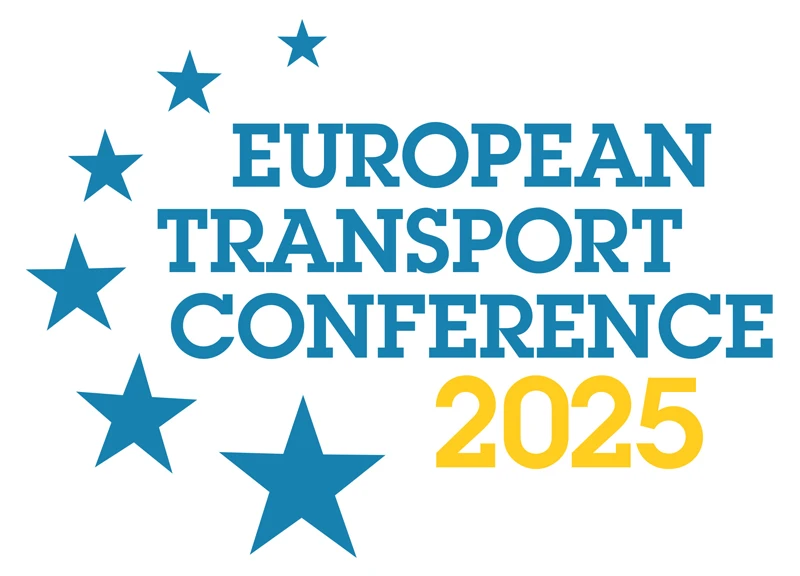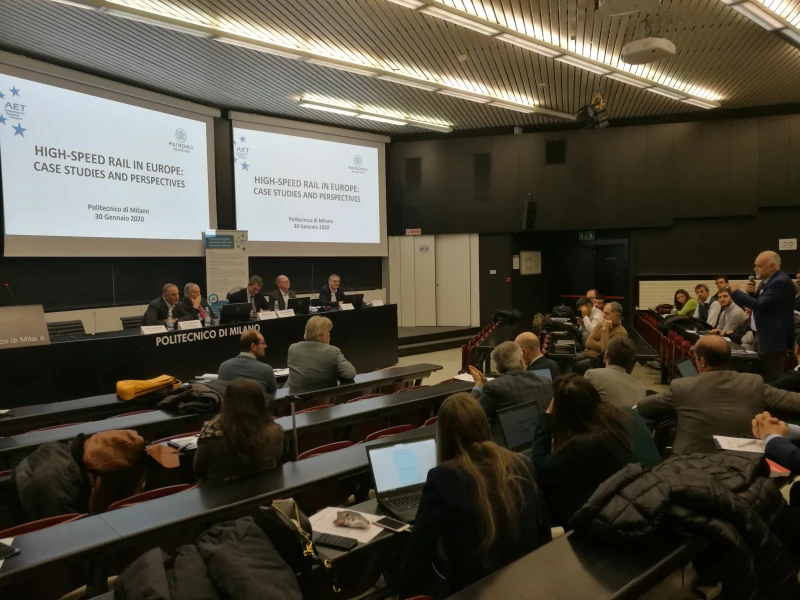-
Past ETC Papers

Browse, search and view papers from the past AET Conferences.
-
Members' Area

AET promotes networking and exchange of ideas, information and opportunities amongst members.
Conference Papers 2023
Milan, Italy
ETC Conference Papers 2023
How much high-speed rail is needed to meet the EU Green Deal targets?
Seminar
Day 3 (8 Sep 2023), Session 10, Decarbonising Transport, 14:00 - 16:00
Status
Accepted, documents submitted
Submitted by / Abstract owner
Wolfgang Scherr
Authors
Marco Kampp, Deutsche Bahn
Jan Schüth, Deutsche Bahn
Julia Sedelmeier, Deutsche Bahn
Martin Thust, Deutsche Bahn
Wolfgang Scherr, MOVENTES
Johannes Schlaich, Berliner Hochschule für Technik
Wolfgang Pelousek, PTV Group
Petr Senk, PTV Group
Short abstract
As part of the Green Deal, the EU has set ambitious targets for high-speed rail demand. Deutsche Bahn has applied travel demand forecasts to show that substantial extensions of infrastructure and service are needed to meet the 2050 target.
Abstract
As part of the Green Deal, the European Union has set targets to reduce greenhouse gas emissions in the transport sector. For passenger transport, the targets are set to double high-speed rail demand by 2030 and to triple by 2050. To reach these targets, Deutsche Bahn (DB) proposes an ambitious EU-wide expansion of the high-speed rail (HSR) network. The proposed network would go far beyond the TEN-T plans.
To support DB’s HSR study, PTV Group and a team of partners developed travel demand model which was used to produce forecasts of European long-distance travel for the horizon of 2050. It was tested if the proposed HSR network expansion can bring the necessary market shifts to reach the EU targets. The effort benefitted from contributions by several European Railways, and from public data sources on transport and socio-economic factors by Eurostat and OECD.
This paper will present two aspects of the study: 1) the main findings for European rail transport policy and 2) the methodology used to forecast travel demand across Europe.
The main findings of the study for European rail policy:
* The current plans for HSR network expansion by 2030 are not sufficient to reach the intermediary EU target of doubling HSR traffic compared to the base year 2015.
* In a scenario with substantial network expansion by 2050, HSR demand will grow from 113 to over 350 billion PKM p.a. This means, it exceeds the EU target of 300% compared to the base year 2015.
* Modal split in long distance travel (over 100 km) is impacted by the HSR network expansion. If the proposed network expansion is implemented, the market share of HSR will increase from 5% in 2015 to over 12% in 2050. Total Rail share will increase from 11% to 19%. Passenger car loses market share, and air travel will experience a slight decline by 2050.
* In our scenario with the proposed network expansion, France will remain the biggest HSR market in 2050, followed by Germany, Italy and Spain, which grow at high rates. The highest growth rates will be found in markets where HSR is introduced as a new mode of travel.
* The main driver of HSR demand is reduction of travel time, resulting from infrastructure expansion and improved rail service. These travel time reductions will cause a shift from other modes to rail and will induce new demand.
* The proposed HSR network makes European metropolitan areas more accessible. It fosters convergence and integration of the European countries.
Besides the main results, the paper will present the passenger demand model developed for this study, which has the following main properties:
* The model covers all EU27 countries plus candidate and neighboring countries. The geographical granularity is NUTS3 (1500 zones).
* Four intercity travel modes are modeled: railway, car, coach, air.
* In the base year 2019, demand matrices are derived from several sources. Empirical air travel demand is derived from booking systems. Rail demand was blended from several sources (OD demand data from DB and partner railways, Eurostat and UIC passenger transport data, capacity analysis on major HSR corridors). Coach demand is based on a mixed supply-driven and synthetic demand model. The car matrix is largely synthetic demand, then calibrated on traffic counts from national sources.
* The rail network model is drawn from Europe-wide timetables in the existing case. the future network is built by connecting metropolitan areas with high speed links. While the commercial speed on today’s high-speed rail infrastructure varies, for the new network, a uniform commercial speed of 210 km/h was assumed.
* Travel demand forecast is modeled in three steps: natural growth, modal shift, induced demand.
* The forecasts simulate the demand reaction to HSR network and service improvements "ceteris paribus”: It is assumed that service and prices of competing modes remain unchanged and no other transport policies or external effects
The authors are convinced that this study contributes to the discourse how the ambitious passenger transport targets of the European Union can be met. Our study shows that the current plans to extend the high/speed rail network are not sufficient and that substantial network expansion across all member states is needed if the targets are to be met with supply changes alone. Additional studies can show how network expansions can be complemented by other policies such as including all external costs into the price of travel.
Programme committee
Rail Policy and Planning
Topic
Sustainable travel – shaping tourism and daily travel in the face of climate change and energy transition
Documents:

Association For
European Transport
Forester House
Doctors Lane
Henley-in-Arden
Warwickshire, UK
B95 5AW
+44 (0) 15 64 793552
VAT number: 710 1866 64
Conference Supporters & Endorsers




Legal Entity
The Association for European Transport is registered as an Association ('vereniging') with the Chamber of Commerce for Haaglanden in The Netherlands under company number 27170096.
Built on Zenario




